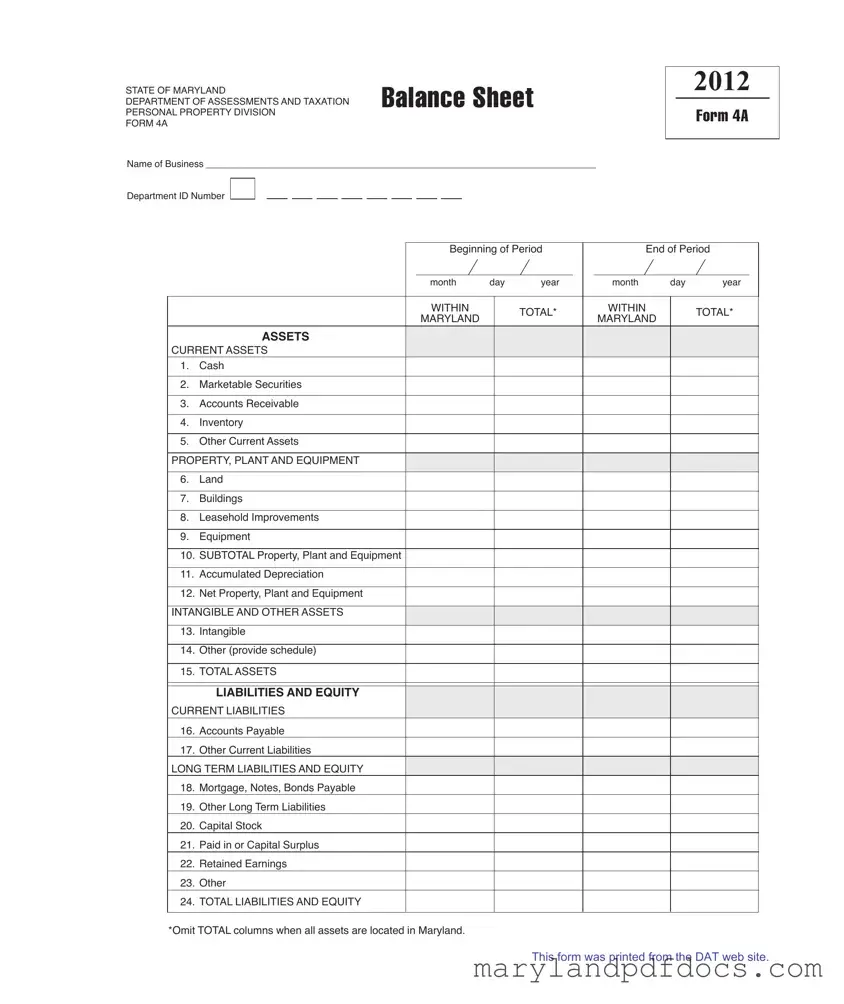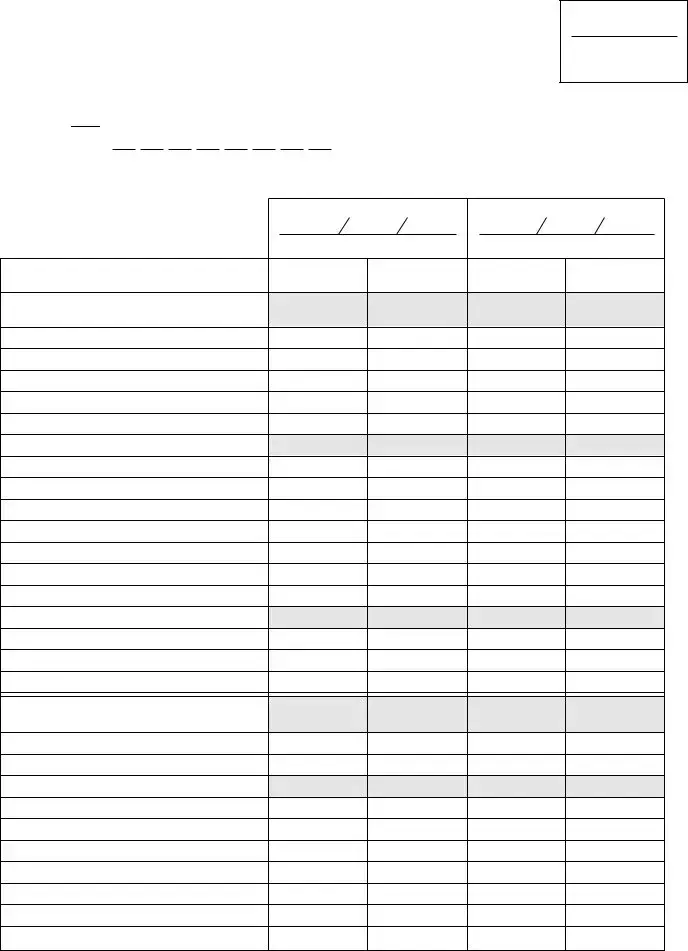What is the Maryland 4A form used for?
The Maryland 4A form is a balance sheet specifically designed for businesses operating in Maryland. It helps businesses report their financial position by summarizing their assets, liabilities, and equity at a specific point in time. This form is essential for the Department of Assessments and Taxation, as it aids in the assessment of personal property tax and ensures compliance with state regulations.
Who needs to file the Maryland 4A form?
Any business that owns personal property in Maryland is required to file the Maryland 4A form. This includes corporations, partnerships, and sole proprietorships. If your business has assets such as cash, inventory, or equipment located in Maryland, you will need to complete and submit this form to provide an accurate financial picture to the state.
What information is required on the Maryland 4A form?
The Maryland 4A form requires detailed information about your business's assets, liabilities, and equity. You will need to list current assets like cash and accounts receivable, as well as property, plant, and equipment, such as buildings and machinery. Additionally, you must include any long-term liabilities and equity, like capital stock and retained earnings. This comprehensive overview helps the state assess your business's value accurately.
When is the Maryland 4A form due?
The Maryland 4A form must be filed annually. The due date typically aligns with the business's reporting period, which is often the end of the fiscal year. It is crucial to check the specific deadlines set by the Department of Assessments and Taxation to avoid any penalties or late fees. Keeping track of these dates ensures that your business remains in good standing with the state.
What happens if I don’t file the Maryland 4A form?
Failing to file the Maryland 4A form can lead to several consequences. The state may impose penalties or interest on any unpaid taxes associated with your personal property. Additionally, non-compliance can affect your business's ability to obtain necessary permits or licenses. It is always best to file on time to maintain your business's good standing and avoid any unnecessary complications.



